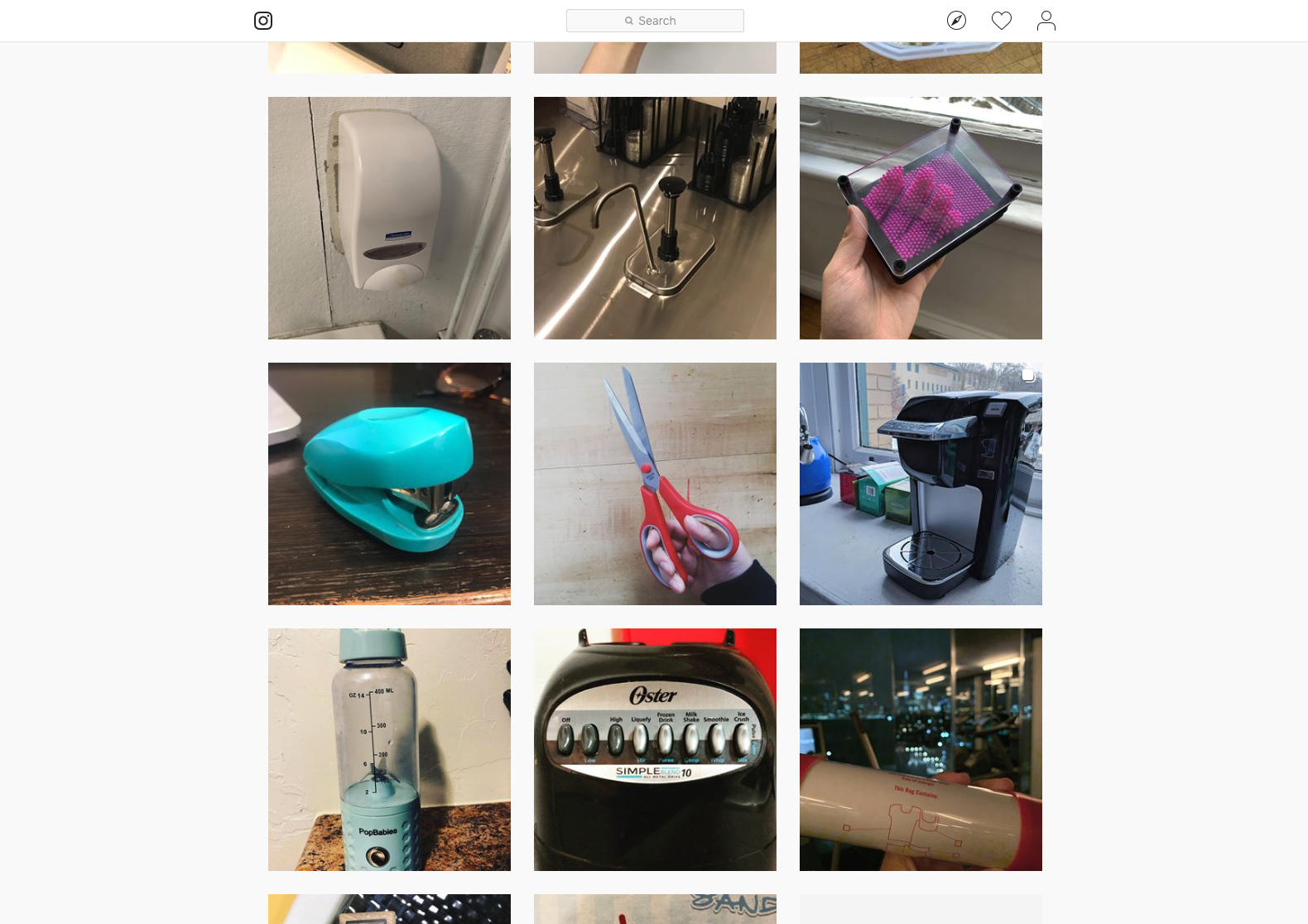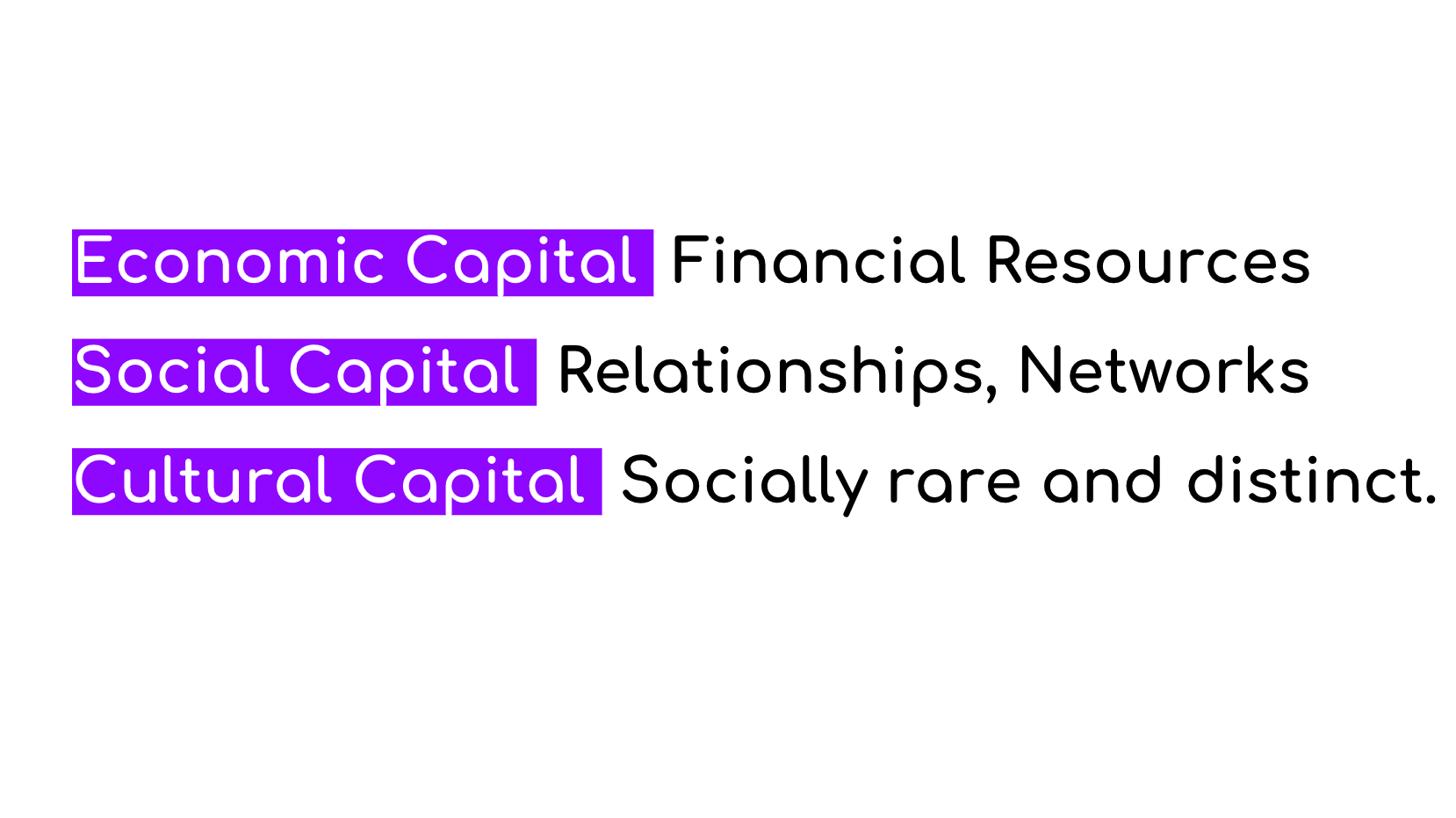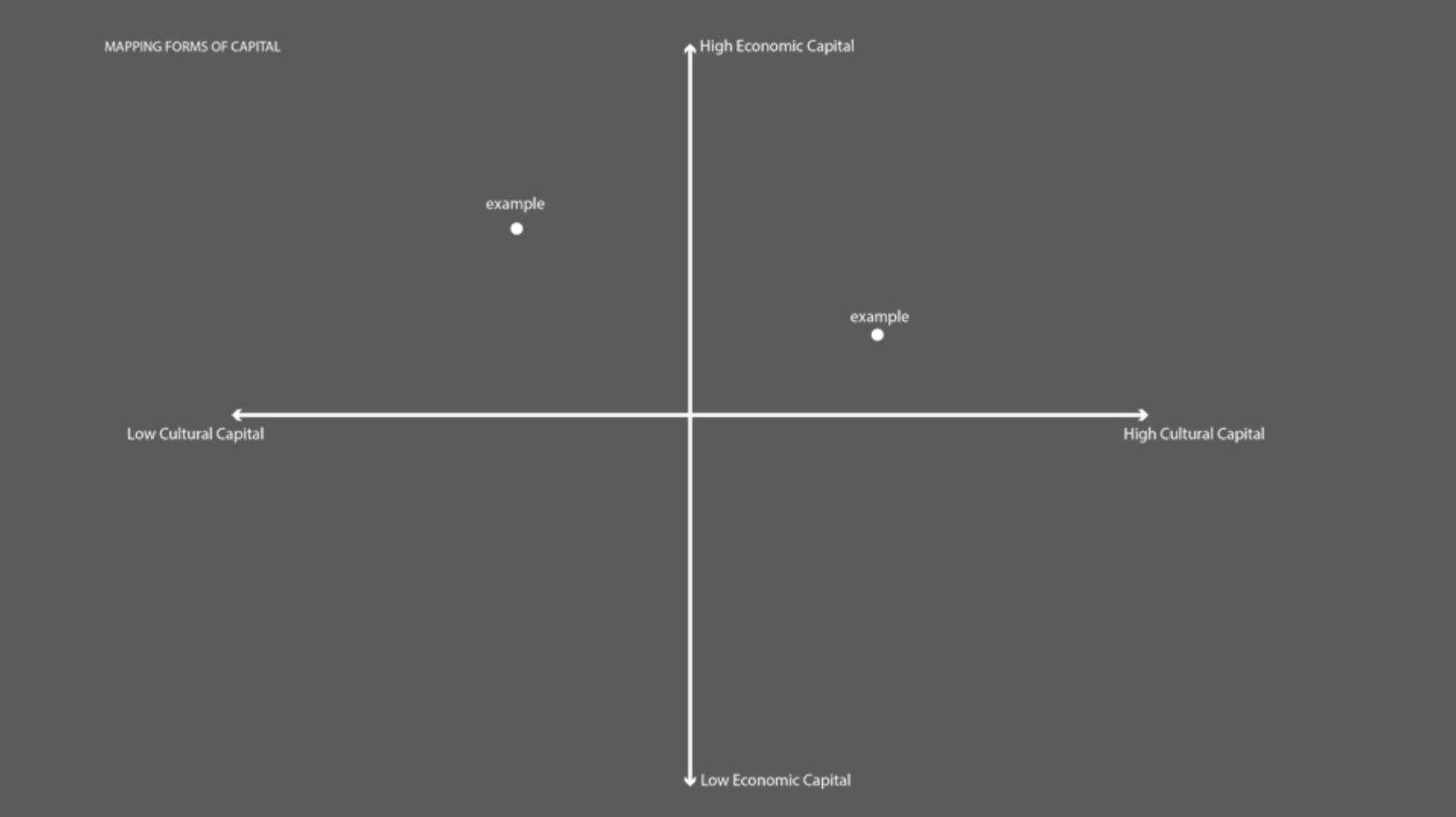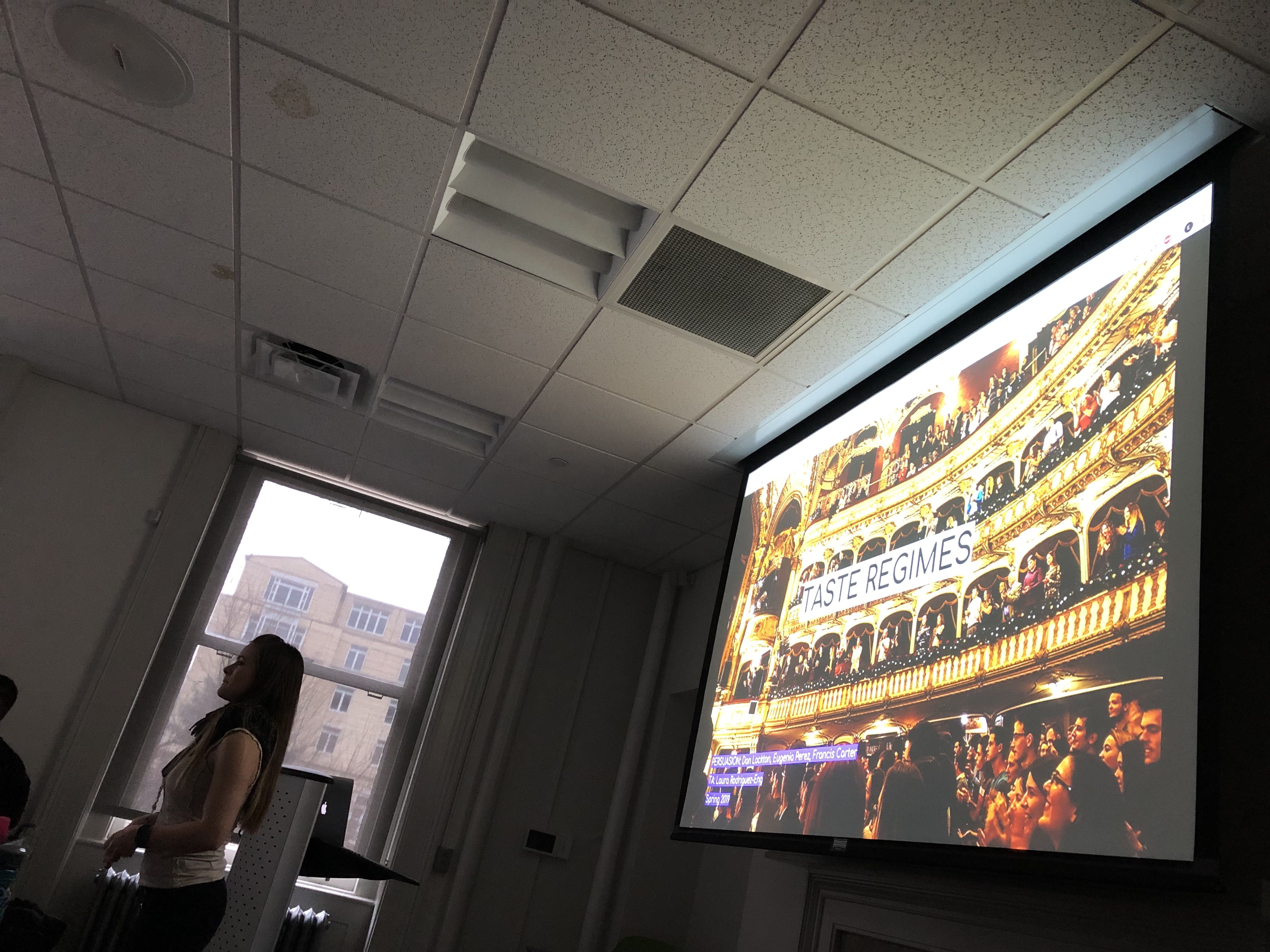Today we reviewed the Instagram posts assignment, students presented the progress of their first project, the cabinet of curiosities, and Eugenia introduced the concept of taste regimes.
Instagram Homework Review
Last week the students had to take photos of something that represented product semantics. We looked at the example of the scissors and the coffee maker, which contained handles and buttons to direct the user through its form.

In-progress review
We split into 4 groups with the students to discuss and review the ideas and progress of their cabinet of curiosities. It was interesting to hear the varying approaches students are taking from physical representations of a cabinet, virtual reality “cabinets”, and book “cabinets.” As well as the different topics of persuasion they were concentrating on from food to dreams. A few things to think about that came up is how will the viewer interact with their cabinets and how can they design the interaction to tell a story, as well as how can they tell the story of how their persuasive objects (whether it is receipts or social media) were persuading them at the moment and what their mindset was like to the viewer.
It will be exciting to see the final results!
Taste Regimes
Eugenia introduced the concept of taste regimes, which is part of social practice theory. Social practice is the relationship between people and the practices that we engage in every single day, such as the clothes you wear, which act as identifiers that can be classified in certain ways. The taste regime that you belong to dictates what you are consuming and how you are living your life.
Pierre Bourdieu, a French sociologist, introduced the Theory of Taste, which consists of Economic Capital, Social Capital, and Cultural Capital in relation to consumption. People can have each capital separately and they do not rely on one another.

And people desire to acquire things because it gives them power (social power, economic power, cultural power) and the symbolism of the acquisition provides them with fulfillment.
As designers, it is important to understand the different capitals because it gives us insight into our users and the way we should be designing for them, as well as understanding the trends and movements, especially within cultural capital.
In-class Exercise
We had the students think about their mornings (what they eat, what they are wearing, what items in their bags, how they got to school what media did they look at) and map them on a 2×2 matrix taking into consideration where things should be place on the matrix when thinking about cultural capital and economic capital.

Instagram Homework This Week
This week we want them to document 1 example of cultural capital using the hashtags #culturalcapital #cmupersuasion2019






